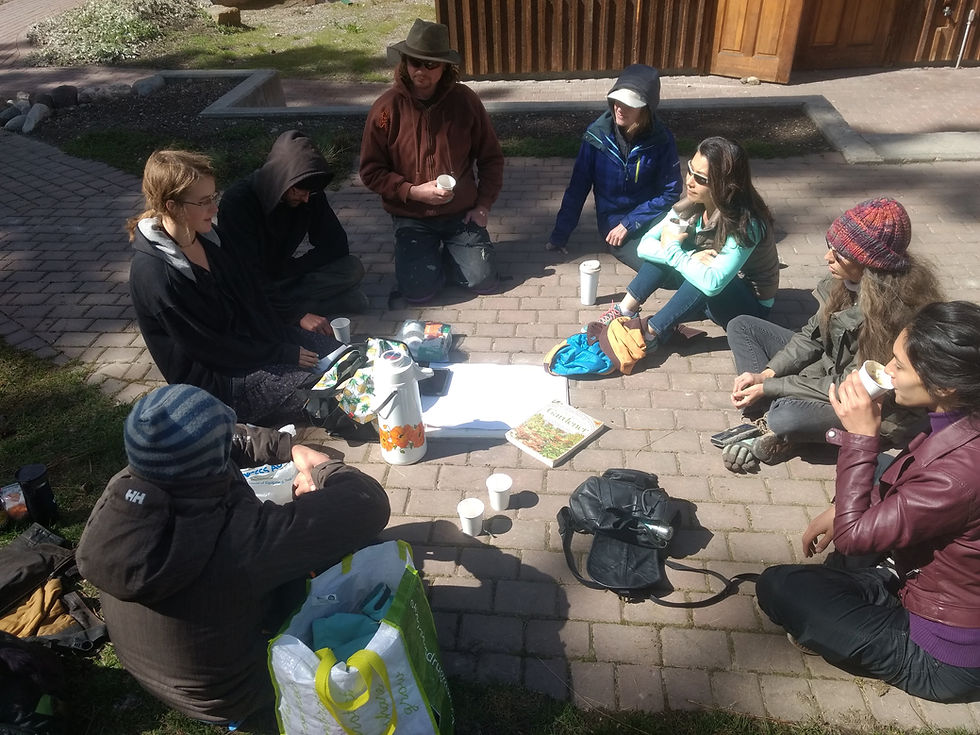Social justice and permaculture: creating inclusive solutions
- rhizomeecosocial
- Apr 10, 2024
- 3 min read
In the world of permaculture, where principles of sustainability and regenerative design reign supreme, it's essential to recognize that environmental stewardship cannot exist in isolation from social justice and equity. While permaculture traditionally focuses on creating resilient and productive ecosystems, it's equally crucial to consider the social implications of our designs and practices.
Social justice and sustainability are inherently interconnected because they address different facets of the same complex system: human societies and their interactions with the environment. Environmental degradation disproportionately affects marginalized communities, exacerbating existing inequalities and injustices. For example, climate change-induced disasters often hit vulnerable populations the hardest, further widening the gap between the privileged and the marginalized. Conversely, social injustices, such as poverty and discrimination, can hinder efforts to achieve sustainability by limiting access to resources and opportunities for those most in need. By addressing social inequities alongside environmental concerns, we can create more resilient and inclusive solutions that benefit all members of society while safeguarding the health of the planet for future generations.

Embodying social justice and equity in permaculture design starts with acknowledging and addressing historical injustices, especially as they relate to the land. For example, we can strive to recognize and address the legacy of colonialism by supporting or designing initiatives that return land to Indigenous communities or that support access to land for communities that have historically faced marginalization or who have been displaced from their ancestral lands.
In decision-making processes, we can prioritize inclusive participation and representation by implementing strategies such as consensus-based decision-making or community assemblies, which emphasize inclusivity, transparency, and grassroots empowerment. For example, meetings about community-based permaculture projects should be made safe and welcoming spaces for stakeholders regardless of socioeconomic status or background. To ensure accessibility, efforts could be made to provide translation services, shared meals, accessibility modifications, or childcare.

Community members should be empowered to lead discussions and propose ideas, with facilitators actively working to amplify marginalized voices and ensure equitable participation. In permaculture, the emphasis lies not on one person imparting knowledge to others, but on recognizing and honoring the diverse wisdom that each individual and community holds. It's about dismantling hierarchical structures and power dynamics that have historically marginalized certain voices while elevating others.
Instead, permaculture embraces a collaborative learning environment where everyone's experiences, perspectives, and ancestral knowledge are valued equally. By centering Indigenous and traditional ecological knowledge, alongside contemporary scientific insights, permaculture practitioners co-create solutions that are culturally relevant, socially just, and ecologically sustainable. This approach not only empowers individuals and communities to take ownership of their environments but also fosters resilience and reciprocity in our relationships with the land and each other.
Furthermore, promoting equity in permaculture involves fostering economic empowerment and autonomy through innovative ownership structures. One approach is to implement cooperative ownership models for community gardens or food forests, ensuring that the benefits are shared collectively rather than accruing to a privileged few. In these cooperative ventures, community members pool resources, labor, and decision-making power, creating a more equitable distribution of wealth and opportunity.
By collectively owning and managing shared resources, such as land and infrastructure, communities can build economic resilience and self-reliance while strengthening social bonds and fostering a sense of belonging. Additionally, cooperative ownership models can empower historically marginalized groups, such as low-income residents and people of color, by providing them with a platform to participate in and benefit from sustainable initiatives.
Ultimately, by centering social justice and equity in permaculture design, we can create more than just sustainable landscapes—we can foster thriving communities that honor the dignity and worth of every individual.



Comments